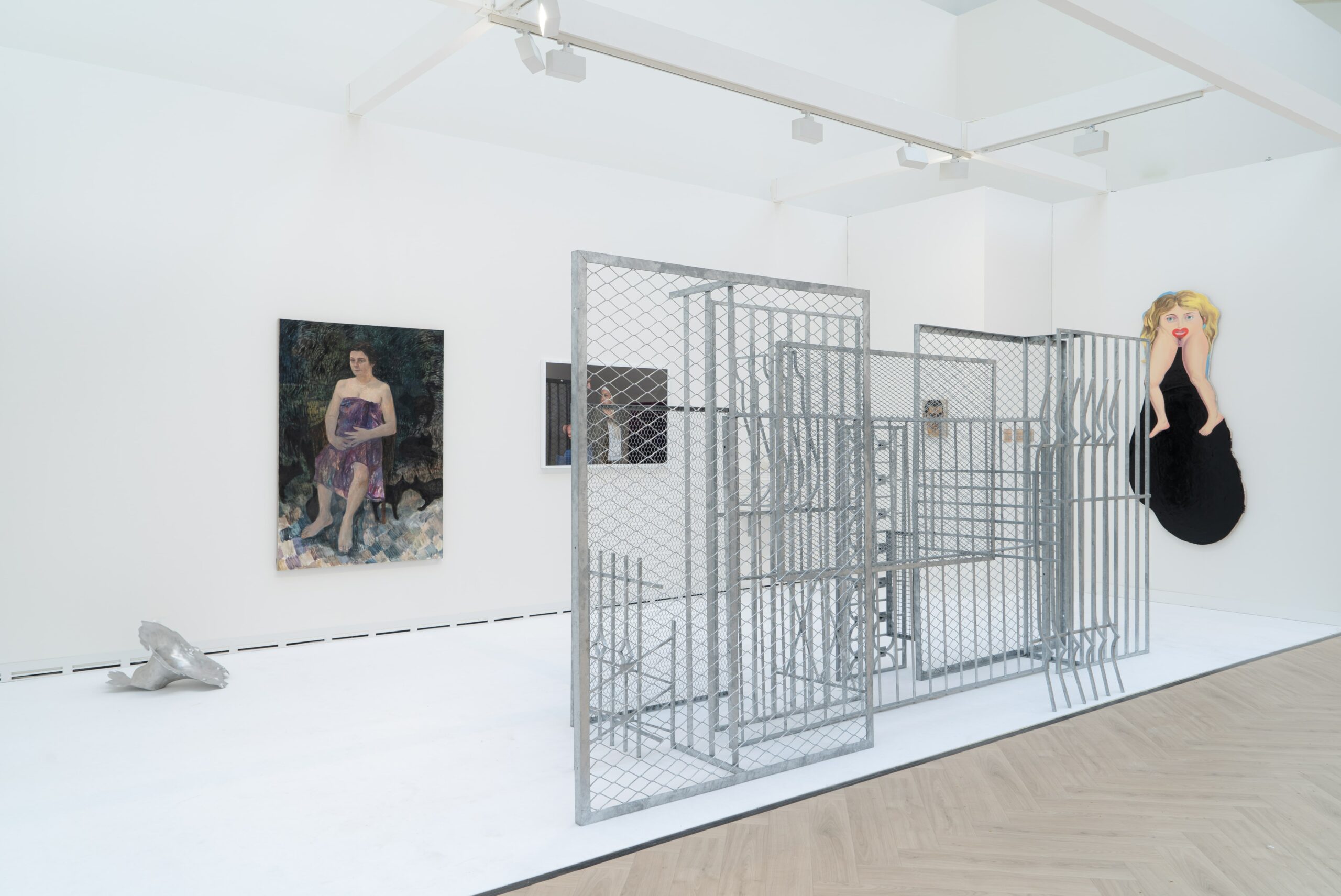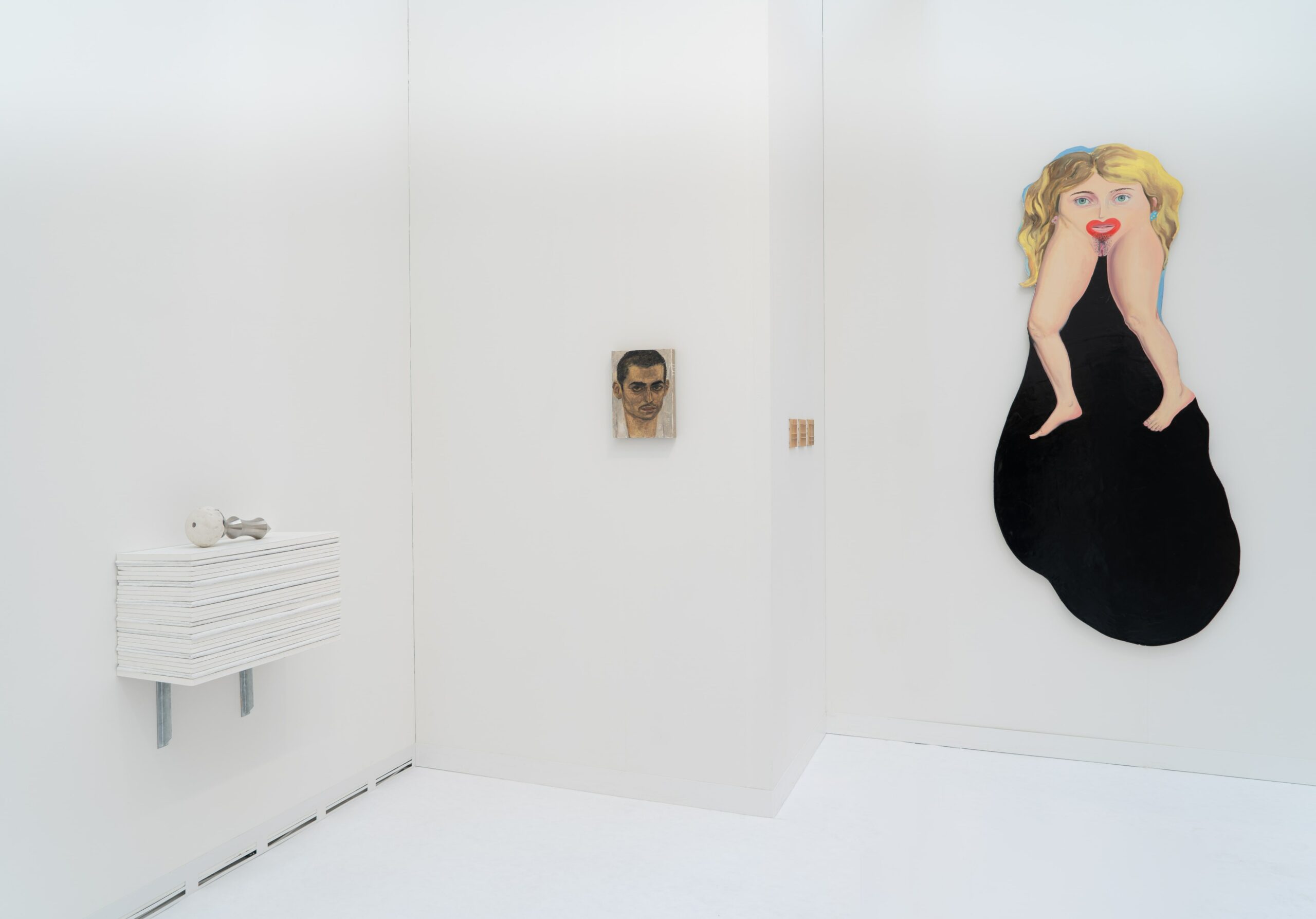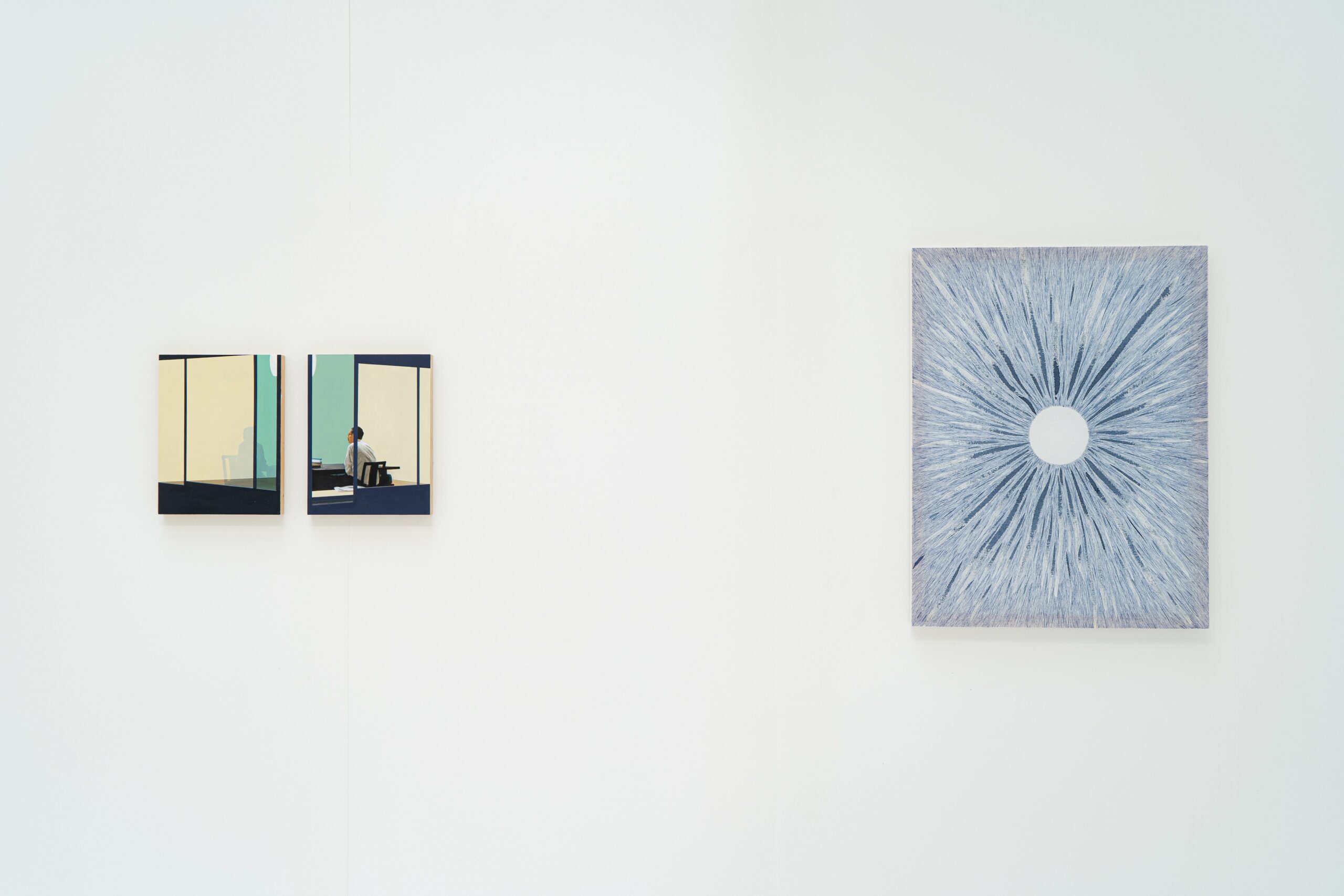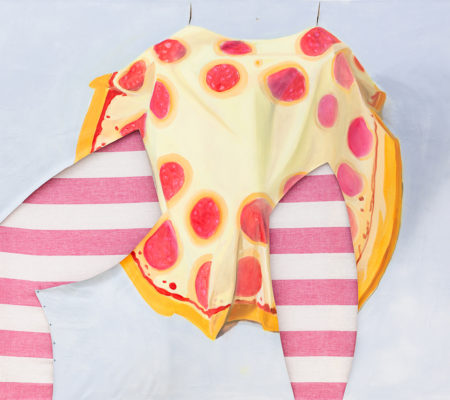
















ART BASEL PARIS 2024
Foire 18 October 2024 - 20 October 2024Address : Grand Palais
BOOTH G13 (galerie Sud-Est – 1st floor)
The gallery Jousse Entreprise is pleased to present a group exhibition at the occasion of Art Basel Paris 2024 – with Louidgi Beltrame, Jennifer Caubet, Tim Eitel, Clarisse Hahn, Seulgi Lee, Nathanaëlle Herbelin and Madeleine Roger-Lacan.
The depiction of rituals acts as a unifying thread – whether it be the occupation of public space, using ancestral techniques, idioms and incantations, or the consistency of desire – fantasized or experienced. The body – in its representation, presence, or absence – turns into a form of architectural component that resists or gives in to varied forms of tensions.
Jennifer Caubet’s sculptures operates within the field of conquest. In Caubet’s Couteau sans lame (Bladeless Knife), the sculpted metal gives way to a more sensual object– taming inherited forms of violence and suggesting infiltration and strategic resilience. To that end, Diffractions – a large-scale galvanized metal grid – embodies the complexity of the wall as a political tool. Her barricade stands on the booth as open ended, porous even, in a superposition of arabesques and layers of wire mesh, opening a redefinition of one’s perimeter of action with the body as the most efficient weapon of all.
In Clarisse Hahn’s work, the body and its role within society is her primary focus, the artist often immersing herself into the lives of her subjects. The series Les Princes de la rue falls within the continuity of her body of work “Boyzone” in which she documents male community mechanisms when those are on the fringe of society. Her lens operates from afar, as in Père et fille, to intimate close-ups. The ritual of grouping and its street choreography – even if imbued with violence at times – is demonstrated as a path to build a sense of community and care.
Louidgi Beltrame’s latest works were inspired by multiple trips in Peru’s archeological site known at El Brujo (The Sorcerer). Documenting petroglyphs, meeting with grave robbers (Huaqueros), shamanic healers (Curanderos), Beltrame deploys how the living communicate with the dead, and how the immaterial and inherited know-how to do so, albeit invisible or considered as illegal, are part of the social fabric and even more so act as a resistance to colonial thinking and its contemporary ramifications.
In Seulgi Lee’s work, craftmanship and ancestral savoir-faire hold a predominant place, testifying not only traditional techniques but also to language systems. The artist practice is deeply imbricated with the locality in which she operates– may it be using water from different rivers, working with Korean quilters or Moroccan basket weavers. They stand as a vehicle for preserving immaterial heritage – sometimes centuries old – and its collective consciousness, all the while shedding light on artisanal labor often with humor and a bright and jubilant palette.
Tim Eitel often uses photography memory. His practice is akin to a ritual of capturing the moment through a device historically charged in relation to painting. His compositions are imbued with a sense of atmospheric suspension, an in-betweenness – as if in purgatory, in which the past is conjured and the future abstract and unknown.
In her paintings, Nathanaëlle Herbelin depicts scenes of everyday life – shared or solitary intimacy. The gaze is often here one of a woman – the painter – looking at her peers, her living spaces and herself. The ordinariness of an embrace, a meal, a familiar face turns precious because of its unicity and transfer onto the canvas.
Madeleine Roger-Lacan’s paintings hold a boisterous vitality – they seem to have a life of their own. We could almost say that they dance. In Baûbo – mon sexe est mon cœur (Baûbo – my sex is my heart), 2022, the artist refers to the legend of the nurse Baubô who provoke the hilarity of Demeter – desperate since the abduction of her daughter by Hades – by recounting saucy stories to the goddess. Historically depicted as armless and holding her eyes, heart and sex at the same place, Roger-Lacan appropriates this figure as a seemingly uncanny self-portrait. Roger-Lacan does not shy away from mapping the extent of her fantasy world – one still imbued by tenderness. Perhaps here lies the healthiest and most fulfilling ritual of all – a resistance against the outside control of one’s desires.
Text: Clara Darrason
Photo: Max Borderie
Opening hours · Horaires d’ouverture
VIP Days · Journées VIP (Invitation)
16 Oct. – 10:00-20:00
17 Oct. – 11:00-15:00
Public Days · Journées publiques
18, 19, 20 Oct. – 11:00-19:00
Press release (PDF) Exhibition's artists >







